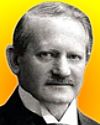
On 21 May 1923, Hans Goldschmidt died, a German chemist who invented the use of Thermite for welding (patented 1895). This provided a much-needed and effective solution for repairing castings or wrought work too heavy for the local forge. Engineers in charge of mining or milling plants located at remote points could use the Goldschmidt process for a quick, simple and effectual means of repair if a gear, a heavy shaft, or a connecting rod suddenly developed a flaw. Valuable down time from halted production was avoided when a duplicate was not on hand while a new part could be brought in from a distance. Goldschmidt named his process aluminothermics. An account of his Aluminothermics appeared in Mining Magazine (1904). The method is still used around the world for welding rails of train tracks.
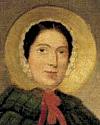
On 21 May 1799, Mary Anning was born, whom Stephen Gould described as "probably the most important unsung (or inadequately sung) collecting force in the history of paleontology." By age 12 she had been collecting fossils from the local seashore, but it was her discovery of a 30-foot complete skeleton of an Ichthyosaurus which made her famous.
She corresponded with, and sold fossils to various noted paleontologists of the day. The sales supported her family, but she also took a keen scientific interest in them.
You can read The Fossil-Finder of Lyme-Regis, an article from Chambers's Magazine (1857) published within a decade after her death, to learn more of this remarkable woman's activities, which begin by surviving a lightning strike as an infant.

On 21 May 1845, Charles E. Bessey was born, the American botanist who started a tree planting experiment that initiated the Nebraska National Forest, the first man-made national forest in the world. He helped influence federal legislation to preserve the giant sequoia trees in California. Today's book pick is: Science With Practice: Charles E. Bessey and the Maturing of American Botany (Iowa State University Press Series in the History of Technology and science), by Richard A. Overfield, who describes the contributions to botany this scientist made in his 45-year career.
It is available from Amazon, typically about Used from $25.00. (As of earlier time of writing - subject to change.)
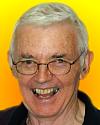 | One major problem with any science is that people who don't know the conceptual history of their field go round re-inventing the elliptical wheel. |
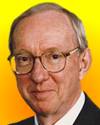 | The basis of the discovery is imagination, careful reasoning and experimentation where the use of knowledge created by those who came before is an important component. |
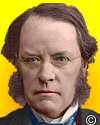 | An ignorant or half-informed teacher may present science as an accumulation of unconnected facts. … To teach in that fashion is like going to the tree of science with its glorious fruit in order to pick up a handful of the dry fallen leaves from the ground. |
| Before you look at today's web page, see if you can answer some of these questions about the events that happened on this day. Some of the names are very familiar. Others will likely stump you. Tickle your curiosity with these questions, then check your answers on today's web page. | |
| Births | |
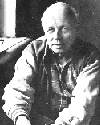 | On 21 May 1921 a Soviet nuclear physicist was born. At the end of World War II, he returned to pure science and the study of cosmic rays. But two years later, he began work with a secret research group on the development of the hydrogen bomb. It is believed he was principally responsible for the Soviets’ success in exploding their first thermonuclear bomb (1954). After this, he became politically more active in the 1960s, campaigned against nuclear proliferation, and from 1980 to 1986, he was banished and kept under police surveillance. By the time he died on 14 Dec 1989 he was as well known as an outspoken advocate of human rights in the Soviet Union. What is the name of this scientist? |
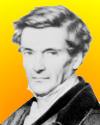 | A French engineer and mathematician (1792-1843) first described a force resulting from the effect of motion on a rotating body, of paramount importance to meteorology, ballistics, and oceanography. Whereas pressure differences tend to push winds in straight paths, winds follow curved paths across the Earth. In 1835, he first gave a mathematical description of the effect. The force is now known by his name. What is the name of this force? |
| Deaths | |
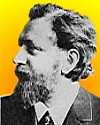 | August Kundt (1839-1894) was a German physicist who developed a method for determining a characteristic property of gases and solids. The principal parts of his apparatus were a long glass tube closed at one end, and a long metal rod with a disk closing the other end, though adjustable in the fashion of a piston. What property did he measure? |
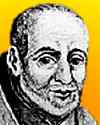 | Niccolò Zucchi (1586-1670) was an Italian astronomer who, in approximately 1616, designed one of the earliest reflecting telescopes, antedating those of James Gregory and Sir Isaac Newton. A professor at the Jesuit College in Rome, Zucchi developed an interest in astronomy from a meeting with Johannes Kepler. With this telescope examined heavenly bodies. Can you name two planets and their features he could observe with his telescope? |
| Events | |
 | On 21 May 1936, commercial production of a new plastic was begun in the U.S. by DuPont in Wilmington, Del. The plastic (polymethyl methacrylate), is crystal clear, highly non-conducting and has low moisture absorption. Other manufacturers in the world now use other names for this plastic, including Perspex. By what trademark name is this DuPont plastic known in the U.S.? |
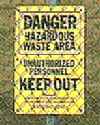 | On May 21 of a certain year, the U.S. President declared a state of emergency at Love Canal in Niagara Falls, New York. The property had been a dumping site for Hooker Chemicals and Plastics. The following year, plans were made to evacuate 710 families. The evacuation was ordered after a study reported that 30 percent of the residents in the area had suffered chromosome damage caused by the toxic chemicals leaking through the ground into their homes. Which president issued this order? |
 | On 21 May of a certain year, the Aquatic Vivarium, the world’s first public aquarium, was opened in Regent’s Park, London, the inspiration of Philip Henry Gosse. He was an English self-taught naturalist who wrote popular illustrated books on nature, and especially marine biology. He thus invented the institutional aquarium when he opened the Aquatic Vivarium. In which quarter of which century was this first public aquarium opened? |
Fast answers for the previous newsletter for May 20: Hewlett-Packard Company • phonograph record disk • thalidamide • aphids • scurvy • Amelia Earhart • Charles Lindbergh.
 If you enjoy this newsletter, the website, or wish to offer encouragement or ideas, please send feedback by using your mail reader Reply button.
If you enjoy this newsletter, the website, or wish to offer encouragement or ideas, please send feedback by using your mail reader Reply button. Your click on a Facebook, StumbleUpon, or other social button on the site webpages is also a welcome sign of appreciation. Thank you for using them.
© This newsletter is copyright 2020 by todayinsci.com. Please respect the Webmaster's wishes and do not put copies online of the Newsletter — or any Today in Science History webpage. (If you already have done so, please remove them. Thank you.) Offline use in education is encouraged such as a printout on a bulletin board, or projected for classroom viewing. Online, descriptive links to our pages are welcomed, as these will provide a reader with the most recent revisions, additions and/or corrections of a webpage. For any other copyright questions, please contact the Webmaster by using your mail reader Reply button.
--
If you do not want to receive any more newsletters, Unsubscribe
To update your preferences and to unsubscribe visit this link
Executive Real Estate Business Class
-
"It was like a man with wings. It wasn't like anything you'd see on TV or in a monster movie." ...
About the publisher
Search This Blog
Blog Archive
-
▼
2021
(585)
-
▼
May
(62)
- Tonight: Back-to-Back Premieres
- On This Day for May 31 - Adolf Eichmann hanged, Cl...
- Newsletter for Monday 31 May.
- On This Day for May 30 - Joan of Arc burned at the...
- TONIGHT at 8/7c: The Tulsa Race Massacre Revealed
- Newsletter for Sunday 30 May.
- Bundle Up For The Summer!
- On This Day for May 29 - Mount Everest summit reac...
- Newsletter for Saturday 29 May.
- On This Day for May 28 - Amnesty International fou...
- Newsletter for Friday 28 May.
- On This Day for May 27 - Founding of St. Petersbur...
- Newsletter for Thursday 27 May.
- On This Day for May 26 - Martin Luther declared a ...
- Newsletter for Wednesday 26 May.
- On This Day for May 25 - U.S. Constitutional Conve...
- Newsletter for Tuesday 25 May.
- Behind Every Empire There’s a Titan
- On This Day for May 24 - Opening of the Brooklyn B...
- On This Day for May 23 - Tibet annexed by China, C...
- Newsletter for Sunday 23 May.
- The Tulsa Race Massacre, 100 Years Later
- On This Day for May 22 - Roman Emperor Constantine...
- Newsletter for Saturday 22 May.
- On This Day for May 21 - First nonstop solo transa...
- Newsletter for Friday 21 May.
- On This Day for May 20 - U.S. Homestead Act signed...
- Newsletter for Thursday 20 May.
- On This Day for May 19 - Ringling Bros. Circus for...
- Newsletter for Wednesday 19 May.
- Learning This Fun Doesn't Need A Summer Break
- On This Day for May 18 - Eruption of Mount St. Hel...
- Newsletter for Tuesday 18 May.
- On This Day for May 17 - School segregation outlaw...
- Newsletter for Monday 17 May.
- Follow the trail of 400 facts!
- On This Day for May 16 - Warsaw Ghetto Uprising su...
- Newsletter for Sunday 16 May.
- On This Day for May 15 - Edith Cresson appointed F...
- Newsletter for Saturday 15 May.
- On This Day for May 14 - Declaration of Israel's s...
- Newsletter for Friday 14 May.
- On This Day for May 13 - U.S. declaration of war o...
- Newsletter for Thursday 13 May.
- Ridiculous History You Want To Know About!
- On This Day for May 12 - First flight over the Nor...
- Newsletter for Wednesday 12 May.
- On This Day for May 11 - “New Rome” established by...
- Newsletter for Tuesday 11 May.
- On This Day for May 10 - Nelson Mandela inaugurate...
- Newsletter for Monday 10 May.
- On This Day for May 9 - Fourth and final voyage of...
- On This Day for May 7 - Theatre Royal opened, Pyot...
- On This Day for May 5 - Mexican victory in the Bat...
- On This Day for May 4 - Four students shot at Kent...
- On This Day for May 3 - Margaret Thatcher elected ...
- Newsletter for Monday 3 May.
- TONIGHT: The Bin Laden Raid, Revealed
- On This Day for May 2 - Lou Gehrig's 2,130-game st...
- Newsletter for Sunday 2 May.
- On This Day for May 1 - May Day founded, Arthur We...
- Newsletter for Saturday 1 May.
-
▼
May
(62)
-
Blogroll
-
About
HistoryFact










0 comments:
Post a Comment